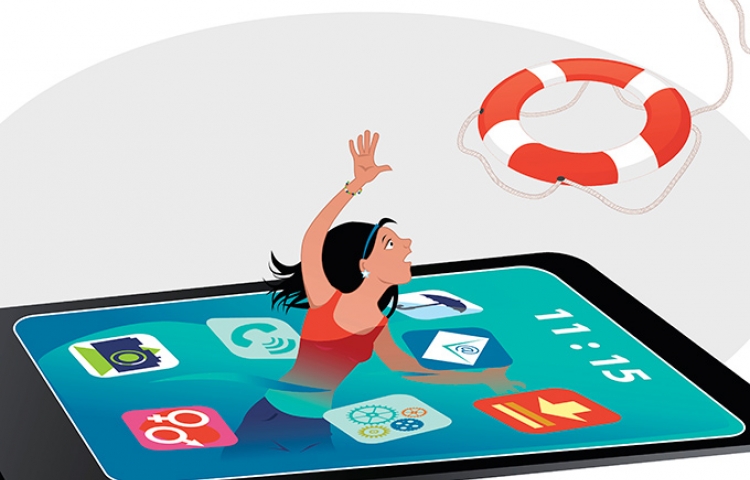
Digital Mental Health – Evidence and Growth
By John Sharp, Director, Thought Advisory, Personal Connected Health Alliance
Providing mental health services through apps and virtual visits was initially controversial and lacked broad adoption. The need is there, with consumers waiting weeks to get an appointment with mental health providers and limitations on insurance coverage. The success of telehealth for medical eVisits paves the way for digital mental health. With new evidence and new players in this space, the field is beginning to gain traction. Here are some recent articles addressing the issues.
Conversational Agents in Mental Health
Whether its chatbots or voice devices, conversational agents, driven by artificial intelligence are making their way into mental health services. While many tech consumers are using these agents in their daily life, whether it is asking Alexa the weather or Siri to call a friend. But do these work as a mental health service? Some studies are demonstrating initial patient acceptance of these services. Are these services effective or at least equivalent to in-person mental health services? Again, studies are showing promising results. However, while these results are from academic studies, it yet is to be demonstrated that these solutions will scale to meet the needs for a broader population and across state lines.
Digital Mental Health in Community Settings
How can digital services be integrated with mental health services in the community? Traditional mental health services involve 50 minute therapy sessions or 15 minute medication follow up appointments. A recent survey of clinicians and supervisors identified one obstacle as the variety of types of therapy offered by clinicians. Another concern was access to tools from the populations they serve. Many clients may not own a smart phone or afford to purchase an app. Many may only have cell phones with limited time and text messaging. Particularly challenging patients, such as, those with psychosis and bipolar disorder may lack the motivation to use digital health services. They did agree that using text messaging to supplement therapy would be helpful. However, unsecured text messages may violate HIPAA privacy rules and there would be no reimbursement for these. Perhaps some more creative Medicaid programs or Medicare Advantage will open the door to texting and other digital mental health services.
Engagement in Digital Mental Health
There is slow adoption rates as these services move from the research setting to the real world. To bring these evidence-based techniques into regular practice, server obstacles must be overcome. The note several implementation obstacles, such as, reimbursement organizational policies. A recent paper in JAMA Psychiatry recommends some solutions. First, employ user-center design, specifically integrating the services into the fabric of people’s every day experiences. This means a design which is engaging for patients and compatible with the workflow of clinicians. User-center design requires optimization through iteration involving the stakeholders in the process. More studies on user-center design for scaling evidenced-based digital mental health are needed.
Targeting depressive symptoms with technology
New technologies being applied to mental health do show promise. For instance, parts of cognitive-behavioral therapy has be incorporated into a self-paced program to treat depression. Yet many question the level of evidence needed to validate these apps and services. Is there adequate follow up, what kind of control group is used, and what is an adequate sample size? One study found that the effect size was greater when the digital services was combined with clinical, in-person services. This argues for using apps in the context of a therapeutic relationship. The American Psychiatric Association has created a mobile app selection criteria:
- Assess the app’s risks, including the risk of compromised privacy and security;
- Review the evidence supporting the app’s potential benefits;
- Evaluate the app’s ease of use;
- Review the app’s clinical integration and ability to strengthen the therapeutic alliance.
Moving from the potential of these digital mental health apps to real-world implementation at scale has the possibility for transforming mental health services.
Conclusions
While a variety of apps and services show promise in digital mental health, these articles address some of the concerns and obstacles to greater scaling of these services. Conversational agents like chatbots would particularly provide the potential to extend providers but patient acceptance needs further testing. Apps which help patients and providers monitor symptoms can help identify triggers to symptom exacerbation can be an adjunct to therapy. Utilizing standards, such as those from the APA can contribute to broader adoption. Finally, reimbursement for these services will promote adoption by providers and extend their services beyond the office.




